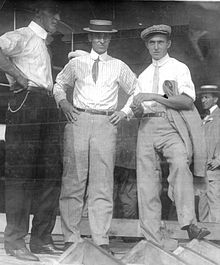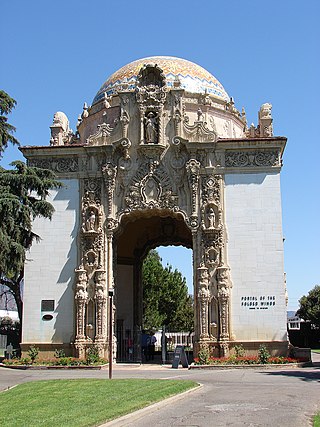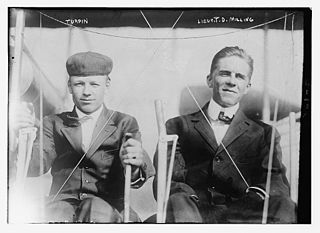
The Wright Exhibition Team was a group of early aviators trained by the Wright brothers at Wright Flying School in Montgomery, Alabama in March 1910.

The Wright Exhibition Team was a group of early aviators trained by the Wright brothers at Wright Flying School in Montgomery, Alabama in March 1910.
The group was formed in 1910 at the suggestion of balloonist Augustus Roy Knabenshue.
The team made its first public appearance on June 13, 1910 at the Indianapolis Motor Speedway.
The team performed aerial shows and set records for altitude (4939 feet) and endurance.
Pilots were paid $20 per week and $50 a day when flying. By August there were five separate teams flying at one time with $186,000 in receipts. Ralph Johnstone was the first to be killed.
After attempting another altitude record over Denver's Overland Park in November, Johnstone put his plane into Walter Richard Brookins' 'spiral dip' dive, and he never recovered. The plane plummeted to the ground, and Johnstone was crushed.
A month later, on New Year's Eve, 1910, Arch Hoxsey was killed in an identical crash. Although the team had lost its star fliers, newer pilots trained by Welsh joined the team and continued performing around the country at 25 locations.
Troubled by the deaths of the pilots, the Wrights disbanded the group in November 1911.
‡ Died in crashes performing for the Wright team
† Died in crashes after leaving the team
The Air Battalion Royal Engineers (ABRE) was the first flying unit of the British Armed Forces to make use of heavier-than-air craft. Founded in 1911, the battalion in 1912 became part of the Royal Flying Corps, which in turn evolved into the Royal Air Force.
This is a list of aviation-related events from 1910:
This is a list of aviation-related events from 1911:

Calbraith Perry Rodgers was an American aviation pioneer. He made the first transcontinental airplane flight across the U.S. from September 17, 1911, to November 5, 1911, with dozens of stops, both intentional and accidental. The feat made him a national celebrity, but he was killed in a crash a few months later at an exhibition in California.

Walter Richard Brookins, was an American aviator. He was the first pilot trained by the Wright brothers for their exhibition team.

Philip Orin Parmelee was an American aviation pioneer trained by the Wright brothers and credited with several early world aviation records and "firsts" in flight. He turned a keen interest in small engines into employment with the Wright Company in its early years and was one of several young pilots hired by the Wright brothers to demonstrate and publicize the capabilities of their airplanes. Because of his youth, blond good looks, and daring reputation, Parmelee had the nickname "Skyman" attributed to him.

Thomas Scott Baldwin was a pioneer balloonist and U.S. Army major during World War I. He was the first American to descend from a balloon by parachute.

The Aeronautical Division, Signal Corps (1907–1914) was the first heavier-than-air military aviation organization in history and the progenitor of the United States Air Force. A component of the U.S. Army Signal Corps, the Aeronautical Division procured the first powered military aircraft in 1909, created schools to train its aviators, and initiated a rating system for pilot qualifications. It organized and deployed the first permanent American aviation unit, the 1st Aero Squadron, in 1913. The Aeronautical Division trained 51 officers and 2 enlisted men as pilots, and incurred 13 fatalities in air crashes. During this period, the Aeronautical Division had 29 factory-built aircraft in its inventory, built a 30th from spare parts, and leased a civilian airplane for a short period in 1911.

The Portal of the Folded Wings Shrine to Aviation is in Burbank, California. The shrine is a 75-foot-tall (23 m) structure of marble, mosaic, and sculpted figures and is the burial site for fifteen pioneers of aviation. Designed by Kenneth A. MacDonald Jr. and sculptor, Federico Augustino Giorgi, it was built in 1924 as the entrance to Pierce Brothers Valhalla Memorial Park Cemetery. Aviation enthusiast James Gillette was impressed by the rotunda's close proximity to the airport and Lockheed Aircraft Company. He conceived a plan to use the structure as a shrine to aviation and worked to that end for two decades. It was dedicated in 1953 by aviation enthusiasts who wanted a final resting place for pilots, mechanics, and other pioneers of flight.
Dedicated to the honored dead of American aviation on the 50th anniversary of powered flight, December 17, 1953, by Lieutenant General Ira C. Eaker USAF (retired). Beneath the memorial tablets in this sacred portal rest the cremated remains of famous flyers who contributed so much to the history and development of aviation. The bronze plaques upon the marble walls memorialize beloved Americans who devoted their lives to the advancement of the air age. Administered under the auspices of the Brookins–Lahm–Wright Aeronautical Foundation, this shrine stands as a lasting tribute.

The Wright Flying School, also known as the Wright School of Aviation, was operated by the Wright Company from 1910 to 1916 and trained 119 individuals to fly Wright airplanes.

Frank Trenholm Coffyn was a pioneer aviator.

Archibald Hoxsey was an American aviator who worked for the Wright brothers.

Ralph Greenley Johnstone was the first American person to die while piloting an airplane that crashed. He and Archibald Hoxsey were known as the "heavenly twins" for their attempts to break altitude records.

Arthur L. "Al" Welsh was a Russian-born American pioneer aviator who became the first flight instructor for the Wright Brothers. He was killed in an aircrash in 1912.

Leighton Wilson Hazelhurst Jr. was a pioneer aviator who was killed in an aircrash with Al Welsh piloting. Hazelhurst was the third United States Army officer to die in an aviation accident. The two to die before him were Thomas Etholen Selfridge and George Edward Maurice Kelly.

George Edward Maurice Kelly was the 12th pilot of the U.S. Army's Aeronautical Division, U.S. Signal Corps and the first member of the U.S. military killed in the crash of an airplane he was piloting. He was the second U.S. Army aviation fatality, preceded by Lieutenant Thomas Selfridge, who was killed while flying as an observer in a Wright Flyer piloted by Orville Wright on 17 September 1908.

James Clifford Turpin was a pioneer aviator with the Wright Exhibition Team.

Charles Keeney Hamilton was an American pioneer aviator nicknamed the "crazy man of the air". He was, in the words of the U.S. Centennial of Flight Commission, "known for his dangerous dives, spectacular crashes, extensive reconstructive surgeries, and ever present cigarette" and was "frequently drunk". He survived more than 60 crashes.

Max Lillie was a Swedish born American pioneer aviator and flight instructor.
Philip Parmelee, the aviator, was killed here today while giving an exhibition flight from the fair grounds. Parmalee was the flying partner of Clifford Turpin, whose airship flew into the grandstand at Seattle Thursday, killing two persons and injuring fifteen.
Lieut. Leighton W. Hazelhurst, Jr., of the Seventeenth Infantry, one of the most promising of the younger aviators of the army, and Al Welsh, one of the most daring professional aviators in America, were instantly killed in a flight at the Army Aviation School at College Park, Md., at 6:30 o'clock this evening.
{{cite journal}}: Missing or empty |title= (help)